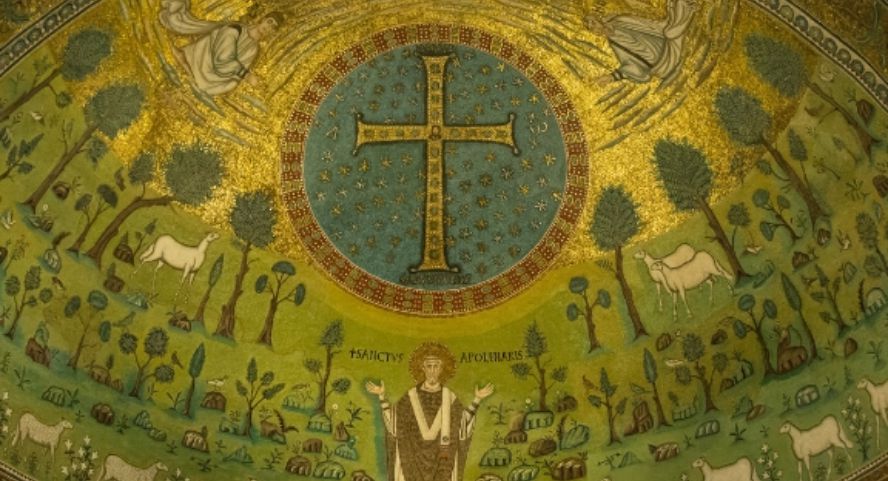Constantinople in the world maps of the Beatus of Liébana
Piotr Kochanek
Katolicki Uniwersytet Lubelski Jana Pawła II , PolandAbstract
Vignettes of Constantinople are on four world maps of the Beatus of Liébana (c. 730- 798): 1) the Beatus map of Saint-Sever (Paris, Bibliothèque Nationale, Ms. Lat. 8878, fol. 45bisv-45terr), 2) the Beatus map of Osma (Burgo de Osma, Archivo de la Catedral, Cod. 1, fol. 34v-35r), 3) the Beatus map of Navarra (Paris, Bibliothèque Nationale, Nouv. acq. lat. 1366, fol. 24v-25r.), and 4) the Beatus map of Arroyo (Paris, Bibliothèque Nationale, Nouv. acq. lat. 2290, fol. 13v-14r). These vignettes are with the period of origin of each map closely connected. In other words, geography, history and political theology are here intimately linked. The vignettes analyzed of the word maps of Beatus illustrate changes in the approach to the question of the role and significance of Constantinople in the eyes of the Latins in the period from 1050 to 1250. These vignettes were certain schemes, that were designed especially for the people of that time and were understood by them. The vignettes were not a universal system, so every mapmaker adorned them with labels in order to avoid ambiguities in the identification of the respective cities. These vignettes were, however, understandable in the context of a specific map, when the map was analyzed against the then geopolitical and theological background. In consequence of this the vignettes of Constantinople on four world maps of the Beatus of Liébana appears as a particular image of the relations between the Latins and the Greeks.
Keywords:
Constantinople, Beatus of Liébana, MapReferences
Baumgärtner I., Die Welt im kartographischen Blick. Zur Veränderbarkeit mittelalterlicher Weltkarten am Beispiel der Beatustradition vom 10. bis 13. Jahrhundert, in: Der weite Blick des Historikers: Einsichten in Kultur-, Landes- und Stadtgeschichte. Peter Johanek zum 65. Geburtstag, hrsg. W. Ehbrecht, Köln 2002, 527-549
Baumgärtner I., Die Wahrnehmung Jerusalems auf mittelalterlichen Weltkarten, in: Jerusalem im Hoch- und Spätmittelalter. Konflikte und Konfliktbewältigung – Vorstellungen und Vergegenwärtigung, hrsg. D. Bauer – K. Herbers – N. Jaspert, Frankfurt am Main 2001
Baumgärtner I., Graphische Gestalt und Signifikanz. Europa in den Weltkarten des Beatus von Liébana und des Ranulf Higden, in: Europa im Weltbild des Mittelalters. Kartographische Konzepte, hrsg. I. Baumgärtner – H. Kugler, Orbis Mediaevalis 10, Berlin 2008
Baumgärtner I., Visualisierte Weltenräume. Tradition und Innovation in den Weltkarte der Beatustradition des 10. bis 13. Jahrhunderts, in: Tradition, Innovation, Invention. Fortschrittsverweigerung und Fortschrittsbewusstsein im Mittelalter, hrsg. H.J. Schmidt, Scrinium Friburgense 18, Berlin 2005, 263-273
Beati in Apocalipsin libri duodecim, ed. H.A. Sanders, Rome 1930
Brama [Tor], in: F. Rienecker – G. Maier, Leksykon biblijny [Lexikon zur Bibel], übers. D. Irmińska, Warszawa 1994
Brama [Tor], in: Słownik symboliki biblijnej. Obrazy, symbole, motywy, metafory, figury stylistyczne i gatunki literackie w Piśmie Świętym [Dictionary of Biblical Imagery], hrsg. L. Ryken – J.C. Wilhoit, übers. Z. Kościuk, Warszawa 1998
Brincken A.D. von den, Die Ausbildung konventioneller Zeichen und Farbgebungen in der Universalkartographie des Mittelalters, „Archiv für Diplomatik, Schriftgeschichte, Siegel- und Wappenkunde”, 16 (1970)
Brincken A.D. von den, Fines Terrae. Die Enden der Erde und der vierte Kontinent auf mittelalterlichen Weltkarten, MGH Schriften 36, Hannover 1992
Brincken A.D. von den, Studien zur Universalkartographie des Mittelalters, hrsg. Th. Szabó, Veröffentlichungen des Max-Planck-Instituts für Geschichte 229, Göttingen 2008
Buchalik A., Tło w formie „bram i murów miast” na sarkofagach wczesnochrześcijańskich (Zsfass.: „City-gate” setting on Early Christian sarcophagi), VoxP 11-12 (1991-1992) Heft 20-23
Carracedo Fraga J., Las „sortes Apostolorum” en los „Comentarios ai Apocalipsis” de Beato de Liébana y el mapamundi del ‘Beato’ de Burgo de Osma, „Euphrosyne” 38 (2010)
Cid C., Santiago el Mayor en el texto y en las miniaturas de los códices del «Beato», „Compostellanum” 10 (1965)
Crostarosa Scipioni N., Beato di Liébana, ECat II 1108-1109
Daly M.J., Beatus of Liébana, in: New Catholic Encyclopedia, II, San Francisco – Toronto 1967
Deckers J.G., Tradition und Adaptation. Bemerkungen zur Darstellung der christlichen Stadt, in: Actes du XIe Congrès International d’Archéologie Chrètienne (Lyon – Vienne – Grenoble – Aoste, 21-28 septembre 1986), vol. 2, Collection del’École Française de Rome 123. Studi di Antichità Cristiana 41, Città del Vaticano – Rome1989
Deppmeyer K., Der Leuchtturm von Pharos – ein spätes Weltwunder, „Frankfurter elektronische Rundschau zur Altertumskunde” 3 (2006)
Destombes M., Mappemondes A.D. 1200-1500. Catalogue préparé par la Commission des Cartes Anciennes de l’Union Géographique Internationale, Monumenta Cartographica Vetustioris Aevi 1, Amsterdam 1964
Duval N., Représentations d’églises sur mosaïques, „Revue du Louvre” 22 (1972)
Englisch B., Ordo orbis terrae. Die Weltsicht in den Mappae mundi des frühen und hohen Mittelalters, Orbis Mediaevalis 3, Berlin 2002
Férotin M., Béatus, DB I 1531-1532
García-Aráez H., Los mapamundis de los Beatos. Origen y características principales, „Miscelánea Medieval Murciana”, 18 (1993-1994)
García Iglesias J.M., El mapa de los Beatos en la pintura mural románica de San Pedro de Rocas (Orense), „Archivos Leonenses” 69 (1981) 73-87
Jeremias J., pyle, pylon, TWNT VI 920-927
Klein P.K., Beatus v. Liébana, LThK II 109
Kochanek P., Konstantinopel in den Weltkarten des Beatus von Liébana, in: Proceedings of the 22nd International Congress of Byzantine Studies (Sofia, 22-27 August 2011), vol. II: Abstracts of Round Table Communications, ed. I. Iliev – E. Kostova – V. Angelov, Bulgarian Historical Heritage Foundation, Sofia 2011
Kochanek P., „Rozesłanie Apostołów” na mapie Beatusa z Burgo de Osma, in: Fructus Spiritus est Caritas, Księga Jubileuszowa ofiarowana Księdzu Profesorowi Franciszkowi Drączkowskiemu z okazji siedemdziesiątej rocznicy urodzin, czterdziesto¬lecia święceń kapłańskich i trzydziestopięciolecia pracy naukowej, red. M. Wysocki, Lublin 2011
Lesêtre H., Porte, DB V 548-555
Miller K., Mappaemundi. Die ältesten Weltkarten, 1. Heft: Die Weltkarte des Beatus, Stuttgart 1895
Moralejo S., El mundo y el tiempo en el mapa del Beato de Osma, in: Patrimonio artístico de Galicia y otros estudios. Homenaje an Prof. Dr. Serafín Moralejo Álvarez, dir. Á.M. Franco Mata, 2. Bd, Santiago de Compostela 2004
Moralejo S., Las Islas del Sole. Sobre el mapamundi del Beato del Burgo de Osma (1086), in: A Imagem do mundo na Idade Média, Actas do Colóquio Internacional, organizadas por H. Codinho, com a colaboração de A.P. Morais e J.A. Frazão, Diálogo: Série Compilação, Lisboa 1992
Moralejo S., Mapa de la diáspora apostólica en San Pedro de Rocas: Notas para su interpreta-ción y filiación en la tradición cartográfica de los „Beatos”, „Compostellanum” 31 (1986) 315-340
Motte R., Porte, DB Supl VIII 126-136
Pérez de Urbel J., Béat, DHGE VII 89-90
Prelog J. – Klein P.K., Beatus v. Liébana, in: Lexikon des Mittelalters, I, München – Zürich 1980, 1746-1747
Sáenz-López Pérez S., La Reconquista cartográfica: el Islam peninsular en la cartografía me-dieval hispana, „Treballs de la Societat Catalana de Geografia” 61-62 (2006)
Salamon M., Rozwój idei Rzymu-Konstantynopola od IV do pierwszej połowy VI wie¬ku (Zsfass.: The development of Rome-Constantinople from IV to the first half of the VI century), Prace Naukowe Uniwersytetu Śląskiego 80, Katowice 1975
Salsano M., Beato de Liebana, BS II 987-988
Sancti Beati a Liebana Commentarius in Apocalypsin, rec. E. Romero-Pose, vol. 1-2, Scriptores Graeci et Latini, Romae 1985
Sancti Beati, Presbyteri Hispani Liebanensis, in Apocalypsin, ac plurimas utriusque Foederis commentaria, ex veteribus, nonnullisque desideratis paginas Patribus, mille retro annis collecta, nunc primum edita, opera et studio R.P. Doct. H. Florez, Matriti 1770
Strzelczyk J., Gerwazy z Tilbury, in: Studium z dziejów uczoności w średniowieczu, Monografie z Dziejów Nauki i Techniki 66, Wrocław 1970
Szymusiak J.M., Beatus z Liébana, EK II 163
Thiersch H., Pharos. Antike Islam und Occident. Ein Beitrag zur Architekturgeschichte, Leipzig – Berlin 1909
Vázquez de Parga L., Un mapa desconocido de la serie de los „Beatos”, in: Actas del Simposio para el estudio de los códices del „Comentario al Apocalipsis” del Beato de Liébana, t. 1, Madrid 1978
Verschaffel C., Beatus de Liébana, DThC II 517-518
Williams J., The Illustrated Beatus: A Corpus of the Illustrations of the Commentary on the Apocalypse, vol. 1: Introduction, London 1994
Zalewska-Lorkiewicz K., Ilustrowane „mappae mundi” jako obraz świata. Średniowiecze i początek okresu nowożytnego [Illustrierte mappae mundi als Weltbild. Mittelalter und Früher Neuzeit], Res Humanae. Studia 3, Warszawa 1997
Katolicki Uniwersytet Lubelski Jana Pawła II
License
Papers published in Vox Patrum are covered by the Attribution-NoDerivatives 4.0 International (CC BY-ND 4.0) licence. Authors and users can use published works licensed under the CC-BY-ND since 2018. For earlier publications, copyrights are available under fair use rights in accordance with the Act of February 4, 1994 on copyrights and related rights.







